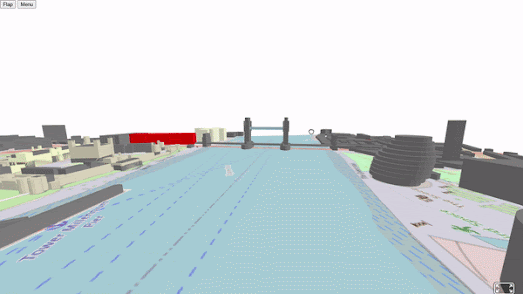The Labour Party has swept to power in the UK and the ruling Conservative Party has lost over half of their seats. At the time of writing the new Prime Minister Keir Starmer has 410 seats in the new government (with 11 seats to declare). This means that he has won well over the 326 seats needed to form a majority government.
The BBC election map includes a cartogram view which does a very good job at visualizing the scale of the Conservative losses in this election.
The map shows that the Conservative Party failed to win any seats in Wales, has won only three seats in Scotland. This cartogram view of the election reveals that the Tories have now become a regional party with a core base remaining mainly only in Southern and Eastern England. However even in the South of England the Conservative Party seems to have been all but wiped out in some previous Tory strongholds, such as Berkshire and Oxfordshire.
The BBC map does a very bad job at visualizing the surge in support for the extreme right in this election. The Reform Party won over 4 million votes. However one of the quirks of the UK's first past the post system is that even though Reform received more than a half a million more votes than the Liberal Party they won only 4 seats, compared to the Liberals 70 seats. Consequently while the Reform Party won 14.3% of the UK vote it has little representation in Parliament and little visual impact on the BBC map.
This means that the BBC map does not provide a great picture of where support for the individual parties may truly lie. The
Guardian election map does include a Labour Party and Conservative Party 'vote share gains' view. This view (shown above) reveals what a good job the Labour Party did in improving their vote across the whole country, but particularly in Scotland. Conversely the Conservative Party failed to improve their vote share in any seat in the whole of the UK.
The
Financial Times map includes a 'Change' view which shows which seats have changed hands in this election. This map reveals how Labour managed to pick up seats from the SNP in Scotland and from the Conservative Party in the North. In the South both the Liberal Party and the Labour Party were able to win a number of seats from the Conservatives. The Conservative Party were able to win just one new seat - in Leicester East, where a couple of independent candidates split the previous Labour vote.
Again, however, the Guardian and FT maps do not include a simple vote share view for each political party. This means that it is therefore impossible to use any of the maps to see where in the country the individual parties won their most and least support. I've read that the Reform Party was the second placed party in 92 constituencies and so far none of the maps I've seen have attempted to visualize this surge in support for the extreme right in this election.
Update: Open Innovation's
General Election 2024 map does include an option to view constituencies colored by the second placed party in Thursday's election. This reveals that Reform were in second place in 98 constituencies.
In his typically ungracious acceptance speech Reform owner Nigel Farage warned that the party was 'coming for Labour'. The Open Innovation map shows that Reform is in second place in many constituencies in the Labour strongholds of the North and Wales. This should be a stark warning to the triumphant Labour Party that a failure to deliver in these regions could prove disastrous for the party and for the UK.
I was actually in the process of creating my own election map (because I wanted to view the second placed party in each constituency) when I stumbled on the Open Innovation map. This means that I now don't have to worry about that (if you want to view the second placed party you can now view the Open Innovation map).
However I will still post a link to my
UK Election 2024 Map, as it includes a couple of features I haven't yet seen elsewhere. My map includes political party filters which allow you to select to only view the seats of individual parties (or any combination of parties).
If you click on a constituency on my map you can also view data on the majority and the vote share of the winning candidate. This allows you to explore the margin by which a candidate won a seat. For example if you click on South Basildon and East Thurrock you can see that Reform won the seat by 98 votes and with a vote share of only 30.79%. This reveals that the seat is extremely marginal and Reform may well struggle to retain this seat at the next election.
















































